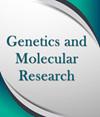Research Article Feasibility of using tobacco hybrids of the Dark tobacco type
IF 0.2
Q4 GENETICS & HEREDITY
引用次数: 1
Abstract
The species Nicotiana tabacum, known as tobacco, is one of the crops with the highest economic value in the world among non-food species. Since 2000, Brazil has become the world‟s second largest tobacco producer. Brazilian production is mainly concentrated in the South region. The main tobacco types are produced in Brazil, such as Dark, which, despite representing a small percentage of the total production in Brazil, is economically important because of a high added value. Until now the only available cultivar is a line that despite having a desirable alkaloid content, has low productivity. In an effort to help improve production, we estimated the heterosis of diallel crosses involving tobacco lines of the Dark tobacco type. A complete diallel cross was made involving 10 lines from the British American Tobacco company breeding program. The 45 hybrid combinations, together with the 10 parental lines and nine other commercial controls, were evaluated at four sites in Southern Brazil, using a triple lattice experimental design (8 x 8). The characteristics evaluated included: green leaf mass (Productivity YLD), and total alkaloid content (ALK), and the selection index was obtained by the sum of standardized variables (SSV), considering a weight of 70% for YLD and 30% for ALK. Estimated correlation between YLD and研究了利用黑烟型烟草杂交品种的可行性
烟草(Nicotiana tabacum)是世界上经济价值最高的非食用作物之一。自2000年以来,巴西已成为世界第二大烟草生产国。巴西的生产主要集中在南部地区。主要的烟草类型是在巴西生产的,例如黑烟,尽管只占巴西总产量的一小部分,但由于其高附加值,在经济上具有重要意义。到目前为止,唯一可用的品种是一种尽管生物碱含量高,但产量低的品种。为了帮助提高产量,我们估计了涉及黑烟型烟草系的双列杂交的杂种优势。一个完全双列杂交涉及英美烟草公司育种计划的10个品系。采用3格试验设计(8 × 8),在巴西南部4个试验点对45个杂交组合、10个亲本系和9个其他商业对照进行评价。评价指标包括:绿叶质量(生产力YLD)和总生物碱含量(ALK),选择指标采用标准化变量和(SSV),其中YLD权重为70%,ALK权重为30%。估计YLD与
本文章由计算机程序翻译,如有差异,请以英文原文为准。
求助全文
约1分钟内获得全文
求助全文
来源期刊

Genetics and Molecular Research
生物-生化与分子生物学
CiteScore
1.00
自引率
25.00%
发文量
7
审稿时长
3 months
期刊介绍:
Genetics and Molecular Research (GMR), maintained by the Research Foundation of Ribeirão Preto (Fundação de Pesquisas Científicas de Ribeirão Preto), publishes high quality research in genetics and molecular biology. GMR reflects the full breadth and interdisciplinary nature of this research by publishing outstanding original contributions in all areas of biology.
GMR publishes human studies, as well as research on model organisms—from mice and flies, to plants and bacteria. Our emphasis is on studies of broad interest that provide significant insight into a biological process or processes. Topics include, but are not limited to gene discovery and function, population genetics, evolution, genome projects, comparative and functional genomics, molecular analysis of simple and complex genetic traits, cancer genetics, medical genetics, disease biology, agricultural genomics, developmental genetics, regulatory variation in gene expression, pharmacological genomics, evolution, gene expression, chromosome biology, and epigenetics.
 求助内容:
求助内容: 应助结果提醒方式:
应助结果提醒方式:


